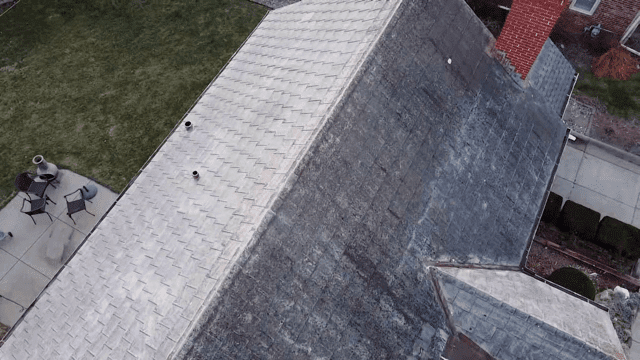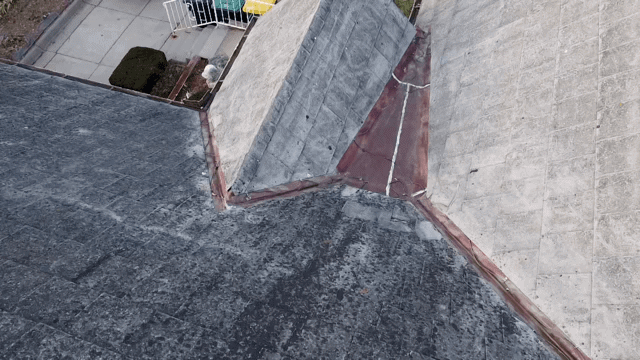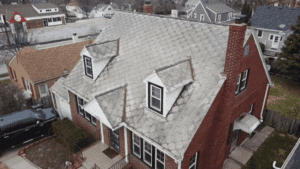Are you living on a home that had a roof installed before 1990? There’s a strong probability asbestos is present in the shingles, sealant, gutters, or grouting.
Asbestos cement shingles were popular Omaha in from the 1920s through the late 1980s. Many of these roofs have a life expectancy of 30 to 50 years and are still in use.
It is generally advisable to leave asbestos work to the experts. However, if you choose to do your own asbestos roof care, following instructions will assist you in staying safe.

Public Safety
Asbestos fibers can be dangerous to people in the surrounding environment. Always give your neighbors a heads up and limit access to the area.
Do’s:
· Inform your neighbors about the work you’re about to do and when
· Prevent access to the surrounding work area
Site Preparation
Seal off your house, protect the landscaping with physical barriers, and have all the supplies you need in one place.
Do’s:
· Keep all doors and windows shut
· Cover up any air vents
· Turn off the home’s air conditioning
· Place a tarp or plastic sheeting around the area
· Get asbestos waste removal bags on hand, along with duct tape
· Remove any lawn equipment, toys, or other objects in the vicinity
· Buy separate cleaning tools like mops and rags
· Get all your equipment outside and in one place, to avoid the need to go back inside or walk around too much
Personal Protection
You need real, asbestos personal protection equipment. Wearing layers isn’t good enough and neither is wearing generic disposable work clothes.
Asbestos fibers can get through other materials, so don’t take chances.
Do’s:
· Wear disposable asbestos clothing that has a hood and protects your shoes
· Wear an asbestos respirator that has an airtight fit (that means shaving any facial hair)
· Before removing asbestos work clothes, keep the respirator on and mist the clothing with water
· Place used clothing in an asbestos waste bag and seal it
· Always take a shower after removing asbestos gear
Don’ts:
· Never shake dust or dirt off clothing
· Don’t keep or reuse any of the disposable protection garments

Handling Asbestos
The standard practice when working with asbestos is to wet all the materials down. But you can’t do that on a roof.
Asbestos shingles are already very slippery. Working on a slick, wet surface is too dangerous for a homeowner. So, work to prevent breaks and limit dust. Then wet the materials down once on the ground.
Do’s:
· Asphalt shingles are often brittle, so work slowly to avoid breaking them
· Carefully lower shingles to the ground
Don’ts
· never drop or break asbestos-containing materials
· don’t slide shingles across each other
· sand, scrape, or brush shingles
· don’t drill holes into asphalt shingles
Waste Disposal
Asbestos roofing materials can’t be chucked into the trash like asphalt shingles. The shingles, other roofing materials, and anything else have to be placed in special asbestos disposal bags.
Everything has to be double-bagged and then sealed with duct tape. Do this even if you think the material isn’t contaminated.
Do’s:
· Get asbestos disposal bags
· Wet down all asbestos-containing materials and dispose of them in asbestos disposal bags
· Clean the area by wet mopping it with water that has a few drops of environmentally safe liquid mixed in or hire an asbestos cleaning crew
· Have an asbestos waste removal service take the trash away or bring it to an asbestos-accepting landfill
· Toss anything used to clean the area, like cloths, mops, and contaminated buckets
Don’ts:
· Don’t take asbestos material to the regular dump
· Never place asbestos material in a domestic trash can
· Never sweep, dust, or vacuum up debris
Tools and Equipment
Working on asbestos cement shingles requires care. You can’t drill or use other power tools, since that will cause the fibers to fly out.
These shingles are brittle and bound to break but work slowly and try to limit that from happening.
Do’s:
· Only use hand-operated equipment or very carefully use low-speed tools
Don’ts:
· Don’t use power washers or any high-pressure water jets
· Don’t use power tools like grinders or saws
· Don’t use compressed air tools
· Don’t use abrasive cutting or sanding discs
· Don’t use electric sanders or grinders
· Don’t use household vacuum cleaners
Safety To-Do List
Here’s a safety recap in a convenient to-do list.
1. Tell your neighbors that you’ll be working with asbestos and ask them to keep their windows shut, doors closed, and HVAC off during that time.
2. Close your windows, shut the doors, turn off the HVAC, and block off any vents.
3. Remove any objects in the area.
4. Place a tarp down around the area.
5. Place plastic sheeting or drop cloths around the area.
6. Cordon off the area with rope or barrier tape.
7. Gear up in asbestos-rated personal protection equipment – disposable clothing, boots, and a respirator.
8. Work carefully when cleaning, removing, or repairing shingles.
9. Lower any pieces down carefully.
10. Wet any roofing material once it’s on the ground, using water with a few drops of liquid soap.
11. Wet the surrounding areas.
12. Double bag waste in asbestos disposal bags, then seal it tight with duct tape.
13. To remove clothing, mist yourself down with water, wipe off the boots, then carefully remove the coveralls and respirator.
14. Place the clothing in waste removal bags, then double bag it and seal.
15. Shower off.
16. Have an asbestos waste removal take the trash away or bring it to an asbestos-accepting landfill.
Get Qualified Asbestos Roofers
Working with asbestos is dangerous. Simply breathing it in can cause irreversible tissue scarring, cancer, and other pleural diseases.
Why take the risk? There’s no reason to put your health and wellbeing in harm’s way when our professional roofers are only a phone call or quick message away.
At AGR Roofing and Construction, we’ve been working on roofs for over 20 years. We know how to work with asbestos while staying safe and protecting homeowners and their families from harm.
Get in touch with us if you want to maintain, repair, or replace an asbestos roof. We’ll send a qualified, asbestos-trained roofer out to do the work for you and keep things safe.





